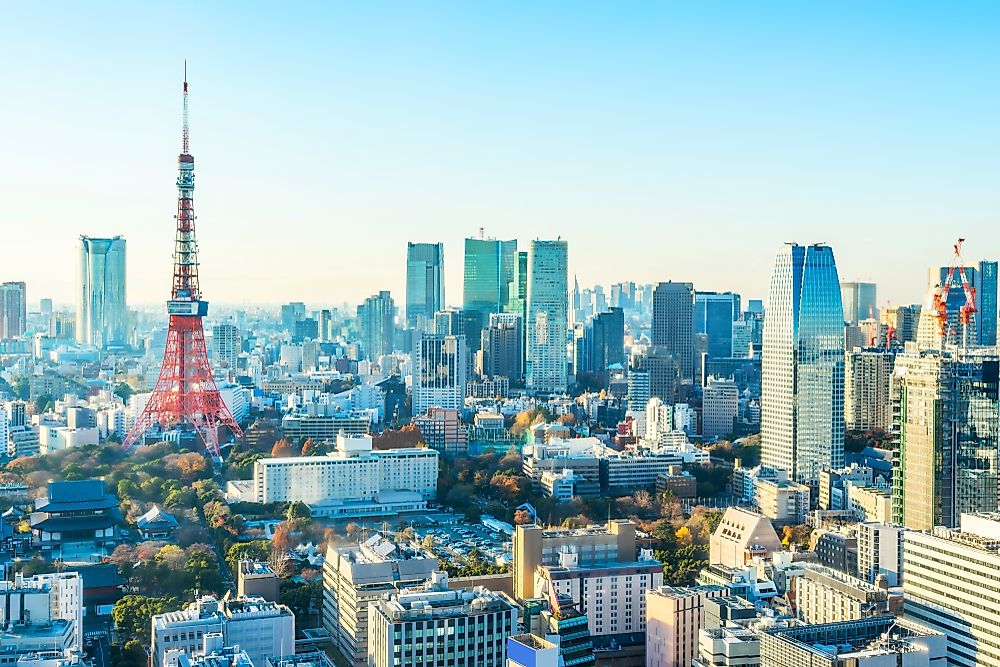The Economy Of Japan

Japan is the second most advanced economy in the world, the third largest by nominal GDP, and the 4th by PPP. The country is one of the world’s most innovative economies having the largest electronic goods industry and patent filings. Japan is also the world’s biggest creditor with the leading public debt ratio.
Overview of the Economy of Japan
The Japanese fiscal year starts on April 1st through to March 31st of the following year. Japan has a nominal GDP of $5.18 trillion according to the International Monetary Fund. The GDP per capita is $39,286. The largest industries are agriculture and fishing, manufacturing, and tourism among others. Japan's GDP per sector is as follows: services 71.4%, industry 27.5%, and agriculture 1.2%. 0.2% of the population of Japan lives under the poverty line of under $1.90 a day. The unemployment rate is 2.90%.
Main Exports of Japan
Japan exports goods worth an estimated $728 billion and the country’s main exports are motor vehicles, auto parts, power generating machinery, iron and steel products, semiconductors, and plastic materials. Japan is the third largest automobile manufacturing country, and they form the leading export goods for the country.
Major Export Partners of Japan
The major export destinations for Japan are the United States, accounting for 20% of all exports; China, accounting for 17.55% of all exports; South Korea, accounting for 7.1% of all exports; Hong Kong, accounting for 5.6% of all exports; and Thailand, accounting for 4.5% of all exports.
Main Imports of Japan
Japan spends an estimated $632 billion on imports of goods such as petroleum, liquefied natural gas, coal, audio and visual apparatus, semiconductors, and clothing. Japan is the third-largest importer of agricultural products and liquefied natural gas, and the largest importer of coal.
Main Import Partners of Japan
Japan imports its products from China, which accounts for 24.8% of all imports; the United States, accounting for 10% of all imports; Australia, accounting for 5.4% of all imports; and South Korea, accounting for 4.1% of all imports.
Challenges to the Economy of Japan
Japan’s economy has experienced numerous problems such as bad debts which have led to a slow and unsteady growth rate and inadequate natural resources due to the unfavorable mountainous terrain thus the need to rely on imported agricultural produce for local consumption. The Japanese population is mainly made up of old people due to a low birth rate, therefore, raising concerns about the future of Japan’s workforce.
Future Plans
Since Japan’s economy depends heavily on human labor, the government intends to lift barriers on foreign immigrants so as to counter the effects of the declining population. The lifetime employment traditions are being eliminated to help the economy cope with the increasing completion from other world economies as well as to increase the chances of employment for younger and skilled individuals.











